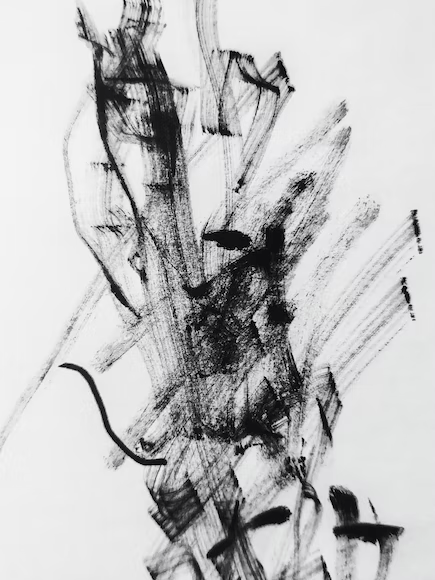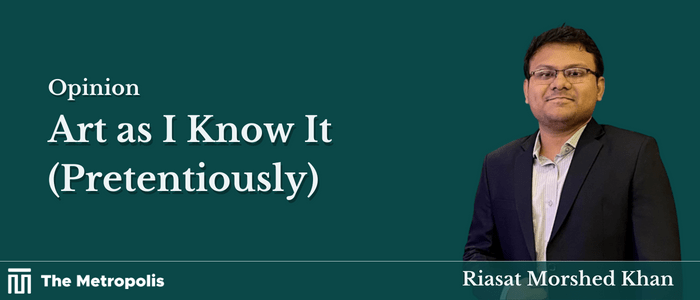The elephant in the room is what exactly is art? And how does a piece qualify to be one? How much power does it wield among its reader or viewer? And why so? The answer to the first question is I don’t know. The answer to the following is the same. However, I see the shape of it; I know it when I hear one, and most importantly when I am communicating with one.
There lies the true power of art. It is hard to figure out and hence, hard to communicate. This brings us to a fundamental instinct of letting others know. Maybe our predecessors were seeking help desperately, sensing an imminent attack from an unstoppable and ruthless force, nature. Being as movable as a straw from the thatch, the memory got imprinted when the communication failed. They had to surrender to the demon nature. Thus, the fear of not rendering the message successfully still haunts humankind – a specter of communication disorder. As you are convinced with my made-up premise, allow me to build on it further.
See, the memory lingers when the message is not delivered to the receiver. By the way, whom are you beseeching for help? To a person, you deem to be your confidante, whom you are not afraid of leaving behind the last vestige of veneer (Call me V?). Moreover, to the person, you are, by default, vulnerable to.
Now back to the argument. The memory lingers when the message is not delivered to the receiver. Therefore, the urge sustains. The foreplay gets prolonged; hence, the intimacy gets deeper, and it journeys toward a darker pit of vulnerability. And when you are vulnerable, you are lost for words. Meanwhile, you were articulating and failing and spiraling towards a bit nearer to the center, mustering up the language, and still failing and spiraling. Finally, you both are transcendental and sign the declaration of dependence.

That is precisely what the dynamics between the artist and the consumer are. They are obliged by the order of communication disorder. And as a tautology, they are still not getting out of it because they were meant to communicate. Why?
Because the consumer was looking for his words. The artist provides some with a spectrum of interpretation. Being bombarded with interpretations, the consumer holds on to his version of meaning even tighter. However, the artist smirks since he defies to be someone’s puppet, and the consumer tights even nearer, and the former starts chasing a mirage. Therefore, the urge sustains. The foreplay gets prolonged; hence, the intimacy gets deeper, and it journeys toward a darker pit of vulnerability. And when you are vulnerable…
Skeptics are violently protesting, I see. What if you are communicated through and through? What if you seem to find your voice – words for words, musical notes to musical notes? It serves only to mean you found the one you were looking for and hence on the same deathbed of possibility, transcendentality, and thus, dragged down the deity to this godforsaken world. Hence you are only left with worshipping which becomes a practice, or performativity. You know the rituals, you know the customs, all you are required to do now is follow them by the rulebook. This kills barehand explorative vulnerability or transcendental liberty. Therefore, the relationship between you and the artist defies the possibility and potential to be something bigger than yourselves. To lip sync Soren Kierkegaard’s “Once you label me, you negate me”, I would like to propose, “Once you label the art, you negate the art”.
Riasat Morshed Khan is an engineer and art enthusiast



